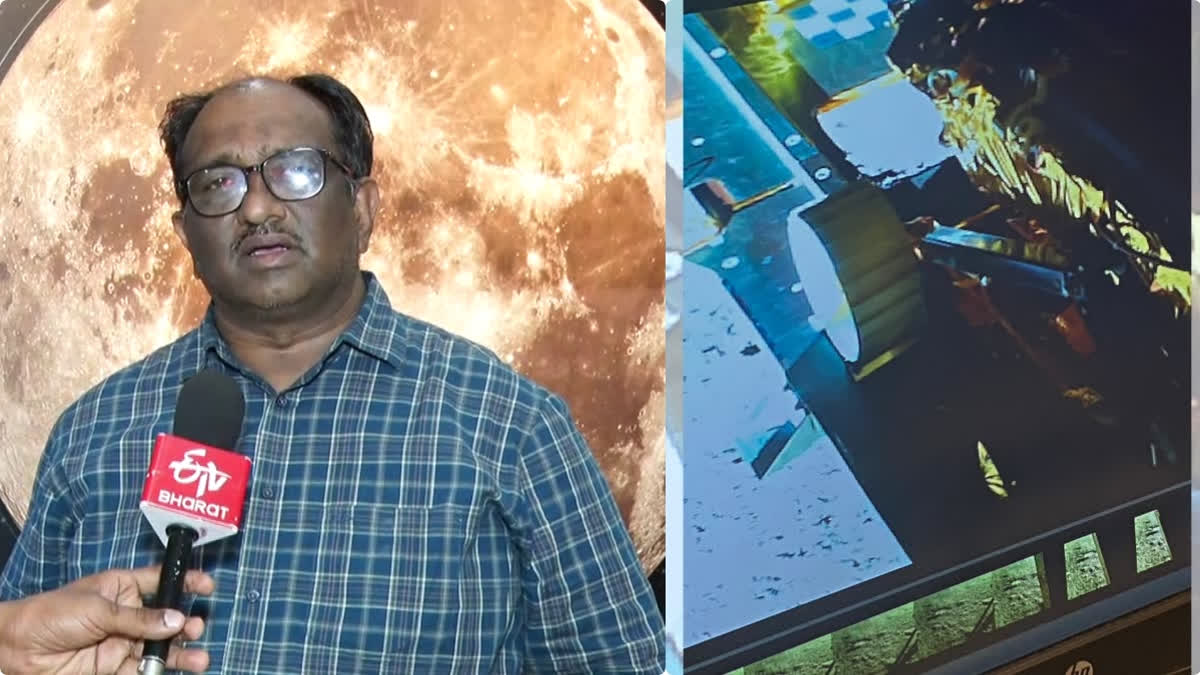ETV Bharat Exclusive: 'Lander Vikram can communicate with Earth in two ways', says Nehru Planetarium scientist Bengaluru (Karnataka): With the successful landing of lander Vikram, of the Indian Space Research Organisation's (ISRO) third lunar mission Chandrayaan-3 on the south pole region of the Moon, Anand, senior scientist of the Nehru Planetarium said that the lander Vikram can send information to the Earth in two ways. Talking to ETV Bharat, Anand said, "Vikram can either directly send information to the space centre here or can first send information to the Chandrayaan-2 orbiter which will further send the data to the Earth."
Anand said, "We experienced how the lander landed on the surface of the moon at 6:04 pm on Wednesday. It took a few hours for it to settle down. After all the parameters were checked and the scientists saw that all the components were working properly, one of the doors on the Vikram lander was opened for rover Pragyan to roll down. This rover took about an hour to smoothly crawl out of the lander to explore the lunar landscape. For the next 14 days, Pragyan will roam around on the Moon and do some scientific analysis.
Anand said, "It has two scientific instruments that can be used to analyse the chemical composition of the Moon's soil and also detect the radiation from the Moon's surface. These are the scientific objectives of the instruments being carried by the rover Pragyan."
"The reason that we are limiting rover Pagyan to explore the Moon's surface in 14 days is because the region where the lander and the rover are situated currently will experience day for the next 14 Earth days. After 14 days, that area will become dark and there will be no sunlight and no electricity will be generated as the solar panels require sunlight to work. If no electricity is generated, the scientific instruments will not be fuel because none of the scientific instruments will work", Ananda told ETV Bharat.
"It is only after the next 14 days that the sunlight will fall on the solar region of the Moon, and the solar panel will get reactivated and will start to generate electricity. This in turn will make all the other scientific instruments work. There is a possibility that this cycle will continue for some time so that we can receive more information about the Moon's surface," he said.
"Lander Vikram has a transmitter that is capable of transmitting information from the Moon to the centre based on the earth and it is also capable of sending information to the Chandrayaan-2 orbiter, which can further send the information to the ground stage. So, the lander can send information to the Earth in two ways. ISRO Telemetry, Tracking and Command Network (ISTRAC) in Peenya, Karnataka will collect the data coming from the data", he added.
Also read:Watch: How Chandrayaan-3 Pragyan Rover ramped down from Vikram Lander to Lunar surface
